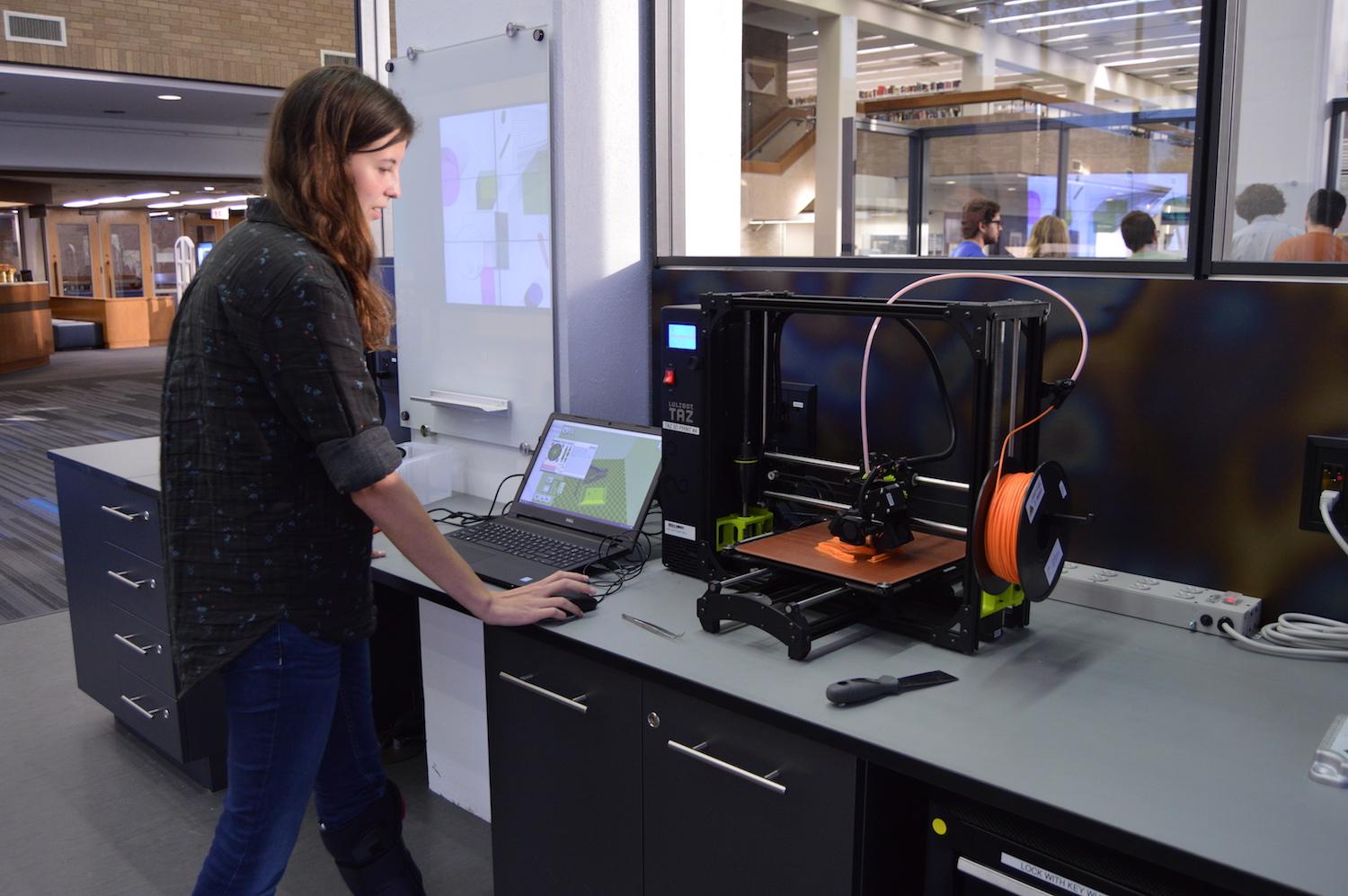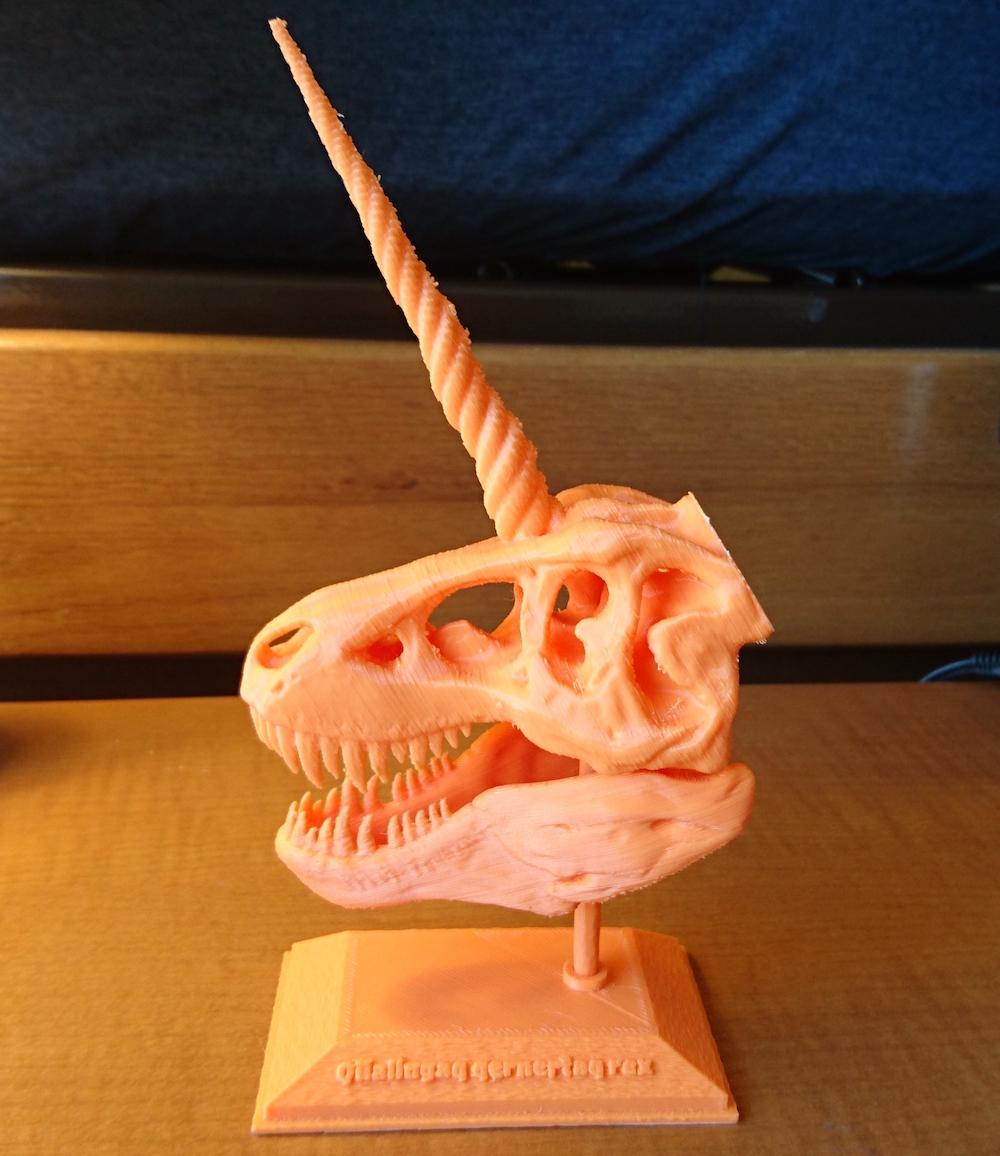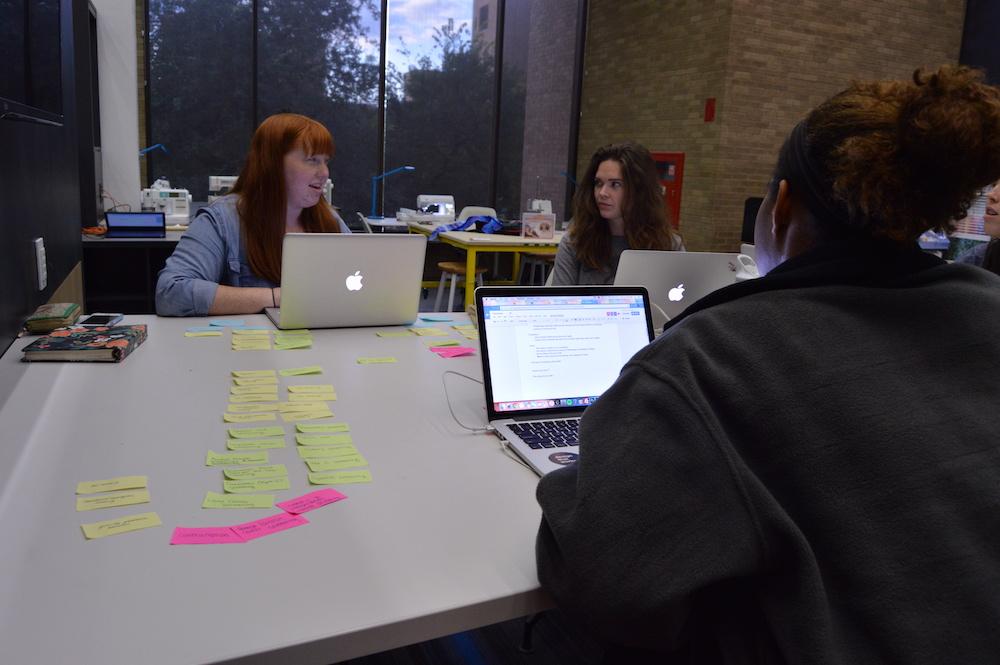Come and Make It

Nothing is immune to the changes technology brings, and the tools of art creation are no exception. Paint brushes, concertos and a needle and thread aren’t obsolete, but technology has expanded the possibilities of visual art, music and theatre design beyond the ideas on which the College of Fine Arts were founded.
To keep up with the expansion, and to keep students at the competitive edge of creative industries, the Fine Arts Library transformed a portion of its main floor into The Foundry—a maker space filled with the latest and greatest in creative technology available to all UT Austin students.
Whether designing art, costumes, video games, music or something in between, the options are limitless. After a brief training workshop, students can reserve time with 3D printers, sewing machines and textile printers, laser cutters and a music recording studio. Built in part with the support of a $200,000 Hearst Foundation grant, The Foundry is a collaboration between the College of Fine Arts and UT Libraries.
“The Foundry gives students the tools, technology and creative space needed to compose, research, record, design, print, program and create the next masterpiece or million-dollar invention,” said Doug Dempster, dean of the College of Fine Arts. “This new maker space is a game-changer for Fine Arts students and all UT students, enabling them to collaborate across disciplines to test new creative concepts and projects.”
Adventures in 3D printing

Coiled up on its spool, the bright orange plastic string doesn’t appear so inspiring at first glance. But attached to a 3D printer, Alison Wilkes said she’s only limited by her imagination.
“Recently I like making things people recognize,” said the Arts and Entertainment Technologies freshman. “Like an Iron Man helmet.”
Wilkes is in the inaugural class of the college’s new B.S. in Arts and Entertainment Technologies and focusing on game development. She is happy to have The Foundry available to her.
Most Thursday afternoons she can be found studying while the 3D printer hums away in the background, printing her latest creative endeavor. Before the winter break, she finished a T-rex skull with a unicorn horn—a gift for her brother.
“I enjoy building something and then taking the rough object home to work on it and make it look like it wasn’t 3D printed,” Wilkes said, describing the task of sanding and smoothing out rough edges made in the printing process. “The work after you 3D print is the part I take more pride in.”
And she’s not alone. The Wednesday before Thanksgiving, each available printer was booked, said Boris Brodsky, arts and creative technologies librarian.
Theatrical design graduate student Robert Mallin took his 3D printed object to the next level. He printed the likeness of a cartoon tiger’s head, then smoothed and hand-painted the surface. After 3D scanning the tiger, he projected a moving face onto the object—transforming it from an inanimate, all-white tiger likeness to a life-like cartoon character that could lick its nose.
The recording studio schedule also fills quickly, with half the students coming from AET courses.
Kat Trujillo, a public relations student who graduated in December and moved to Los Angeles, took an AET class as part of the Digital Arts and Media Bridging Disciplines Program and used the recording studio. She created a three-song EP for her final project and plans to promote the Americana-style album commercially.
“I want to be an artists- and repertoire-coordinator and eventually get into songwriting. I can carry this EP as my business card,” she said.
Justin Johnson, a third-year music production student, worked as a producer for Trujillo and said The Foundry proved to be a great resource. They recorded Trujillo’s vocals and acoustic guitar there, but used space in the Butler School of Music for recording larger instruments played by other hired music majors.
“Toward the end, we listened back to mixes in The Foundry. With the treatment in the room, it was great,” Johnson said. “We were hearing the truth of the mix.”
Trujillo agreed. “It was really nice. There’s no other place on campus that has that equipment for us to use that’s accessible to non-music majors.”
Supporting future makers

AET students do get priority when booking equipment in The Foundry, but before anyone can schedule time, they have to undergo training to ensure safety and proper understanding of how to use the technology.
“We want students to leave their first training session with a demonstrated understanding of how to operate one piece of equipment on a basic level and also understand the safety procedures they need to follow while in the space. We also want to heighten their awareness of other pieces of equipment that are available to them and hopefully inspire them to try something new the next time they visit The Foundry,” said Amber Welch, head of technology-enhanced learning.
Recording studio training is available online, while all other equipment requires an in-person workshop ranging from 30 minutes to two hours. At the close of the fall semester, 84 students were certified in one or more areas, and nearly 200 students had joined the Canvas group to schedule a training.
“We want to establish a baseline. At this point in our rollout process, we are offering introductory level basic classes,” Welch said. “After we get a sense of the demand from students and faculty from across campus and gain a better understanding of the way that learning occurs in this space, we will start to offer more advanced classes. We need a starting point, and that is what our current roster of classes provides us as we prepare to think about The Foundry from a more programmatic perspective.”
There is still more to come for this creative space. The final piece of technology awaiting workspace is the virtual reality equipment and computers.
“I’m excited about the virtual reality area, but because of the space requirement puzzle, it is still on hold,” Brodsky said. It requires at least an 8- by 8-foot space where someone can safely walk around with the virtual reality headgear on and not run into anything. Once accessible, students can program in a 3D environment.
As word spreads and students begin to fill The Foundry with their creative energy, CAET Director Bruce Pennycook looks forward to seeing the many projects that will come out of this endeavor.
“The Center for Arts and Entertainment Technologies is all about students learning to create new work using digital tools and learning how to see their creative ideas come to fruition,” Pennycook said. “The Foundry is an absolutely essential component of our program, and it’s a fantastic way for students to gain hands-on experience in a space that promotes collaboration and cross-pollination of ideas.
The Kirby Attwell Guest Artist Residency Program
To support The Foundry, Dean Doug Dempster partnered with accomplished water colorist and Fine Arts Advisory Council member Kirby Attwell to fund and create a new artist residency program that will highlight the experimental interplay between artistic creation and both old and new technologies. The program brings working, distinguished artists who are pushing artistic creativity and cultural invention to the college. The program will host six artists through spring 2018 who will engage with students and faculty through lectures, demonstrations, mentorship and the development of work within The Foundry.
Photo credits: Arts and Entertainment Technologies freshman Alison Wilkes works at a 3D printer in The Foundry. There are 107 students enrolled in the Arts and Entertainment Technologies degree program, and 60 of those students are freshman. Photo by Rose L. Thayer. A 3D printed work of art from Alison Wilkes, an Arts and Entertainment Technologies freshman. Courtesy photo. Design students meet in The Foundry. Photo by Rose L. Thayer.

